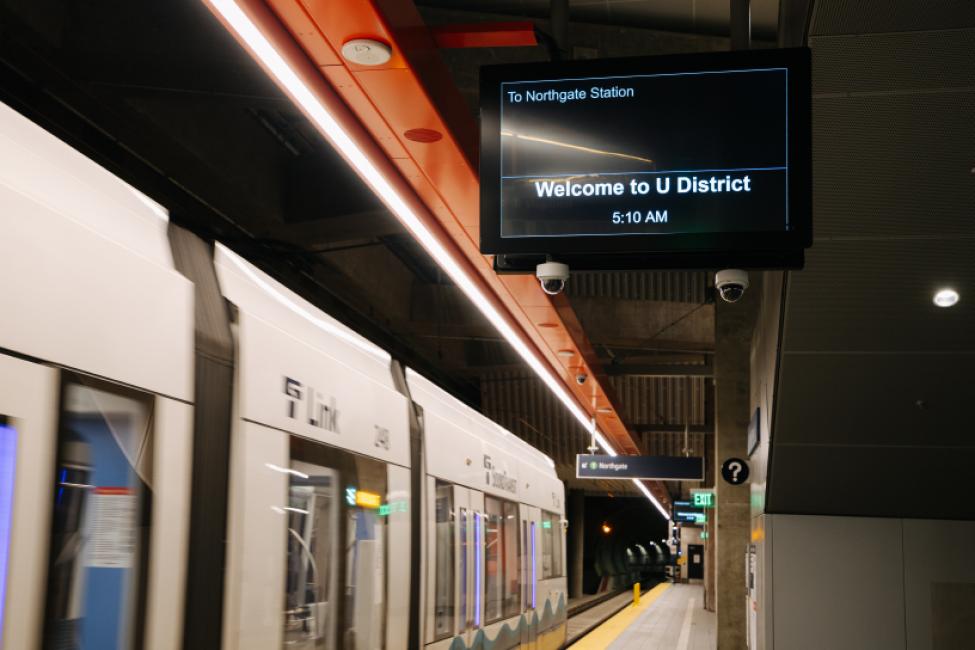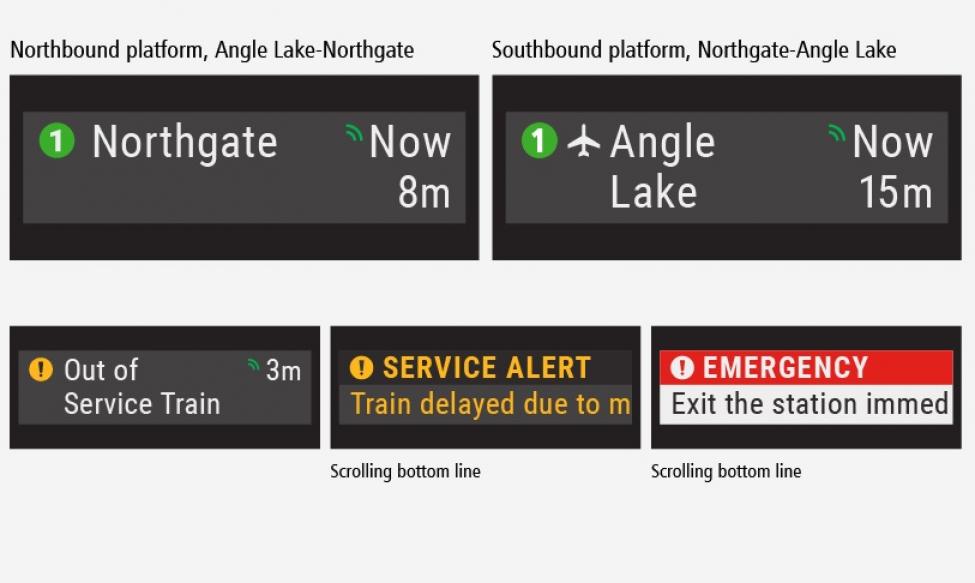(Editors note: time timeline for the rollout of the improved real-time information has been updated since this story was published. The first iterations of the new real-time signs will roll out in 2023.)
Shortly after the Northgate, Roosevelt and U District stations opened in October, riders quickly noticed that next train information had disappeared from 1 Line platform digital signs. Passengers wondered why it was ‘broken’ and when we could ‘get it working again’.
We want to clarify that the system is working just as it always has, but we made the deliberate decision to turn it off until its replacement arrives in the spring.
Why would we turn it off?
Two reasons: because the quality of that information is not up to our standards, and because we’re replacing it with something much better.
Since the 1 Line runs frequently and reliably, average wait time on the platform is just 4-5 minutes.
When trains are running normally, the arrival predictions have been mostly accurate.
But next train arrival predictions are most important when things go awry, and the current system has been the least reliable just when you need it most.
To understand why, a bit of background.
At end-of-line stations (now Northgate and Angle Lake) the screens had shown departure times based on the 1 Line’s published schedule, rather than real-time predictions.
Whereas at intermediate stations (now Roosevelt through SeaTac/Airport), next-train predictions had been based on when trains passed through “track circuits” distributed along the line.
Now let’s introduce a brief service disruption. Perhaps a train briefly slows to 5 miles per hour while passing through a track circuit, instead of the normal 55 miles per hour for that segment. The system would continue to assume the train’s speed as the maximum 55 miles per hour, rather than its true speed.
If you’re a few stations down the line, suddenly your prediction of the next train will be inaccurate. This is just one example of how things can go awry.
If you are a regular rider and show up at a station and see extremely long or variable ETA predictions on the reader board, you probably shrug it off and know that a train is just a few minutes away.
But if you’re a new or infrequent rider you might quite reasonably turn around and leave.
While we wait for the new system to launch next year, we don’t want bad arrival predictions to deter passengers from riding a service that is in fact quite reliable.
When will things get better?
We will begin launching a new Passenger Information Management System in the fall of 2022.
Though many features will roll out over time, passengers should expect near real-time arrival predictions to return first, with vastly improved accuracy that will only get better with time.
We’ll also be able to show real-time arrivals for unscheduled trains – such as additional trains that run after sports events – which our legacy system cannot do today.
Eventually, once we retrofit Link vehicles with additional capabilities over the next three years, we’ll also be able to be more flexible with our displays, such as showing service alert information directly onboard trains.
The system will not only function better, but it’ll be much easier to read and provide additional information such as line name and color, out of service train information, and rider alerts.
Riders will notice these new signs first at the 10 new East Link stations, and at the other 19 existing stations when they open.
We know that it is frustrating to lose the predictions our stations have been providing for the past few years, but we are really excited about the improved information system rolling out next year.
We thank you for hanging with us as we get it done.

